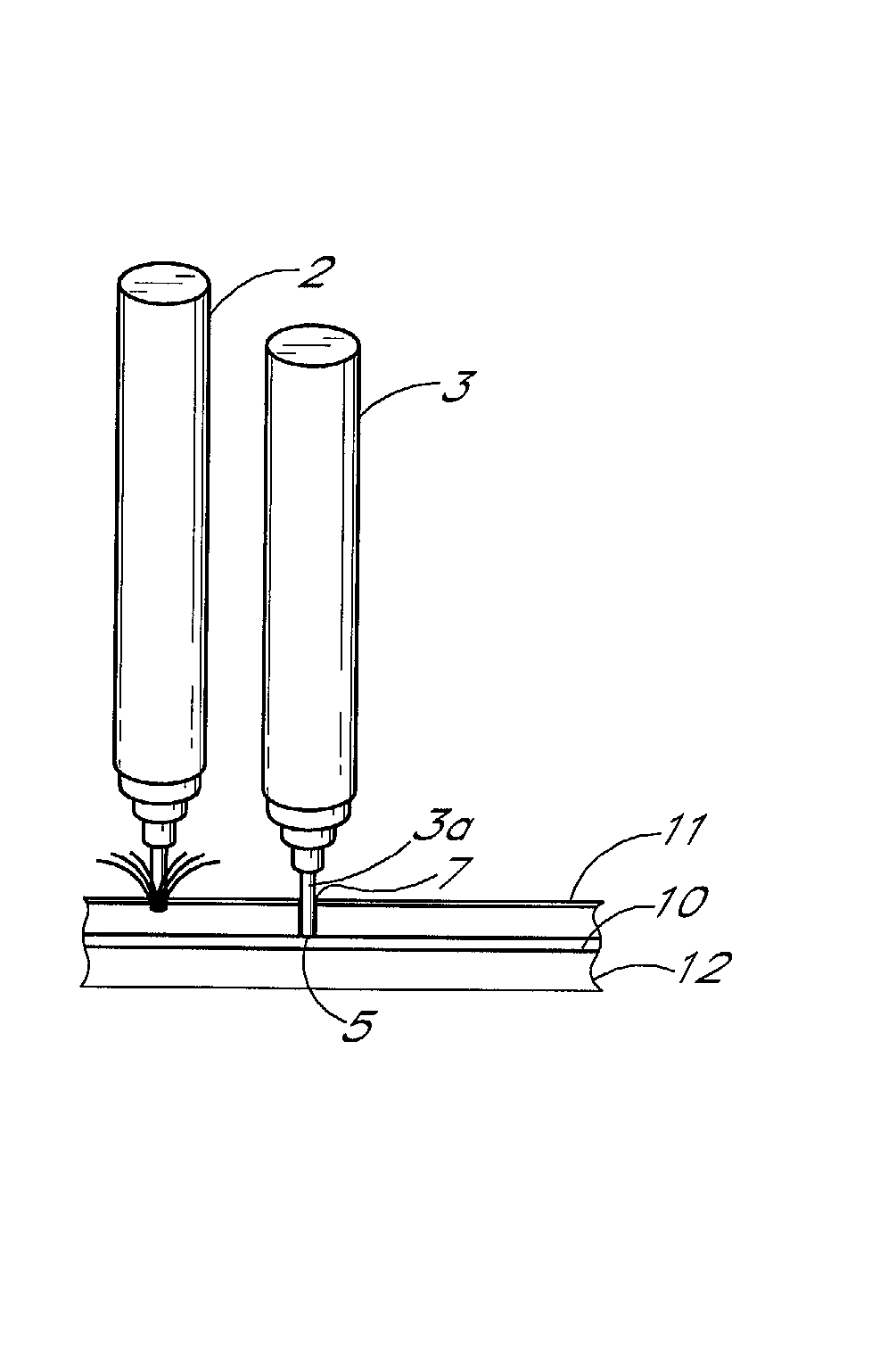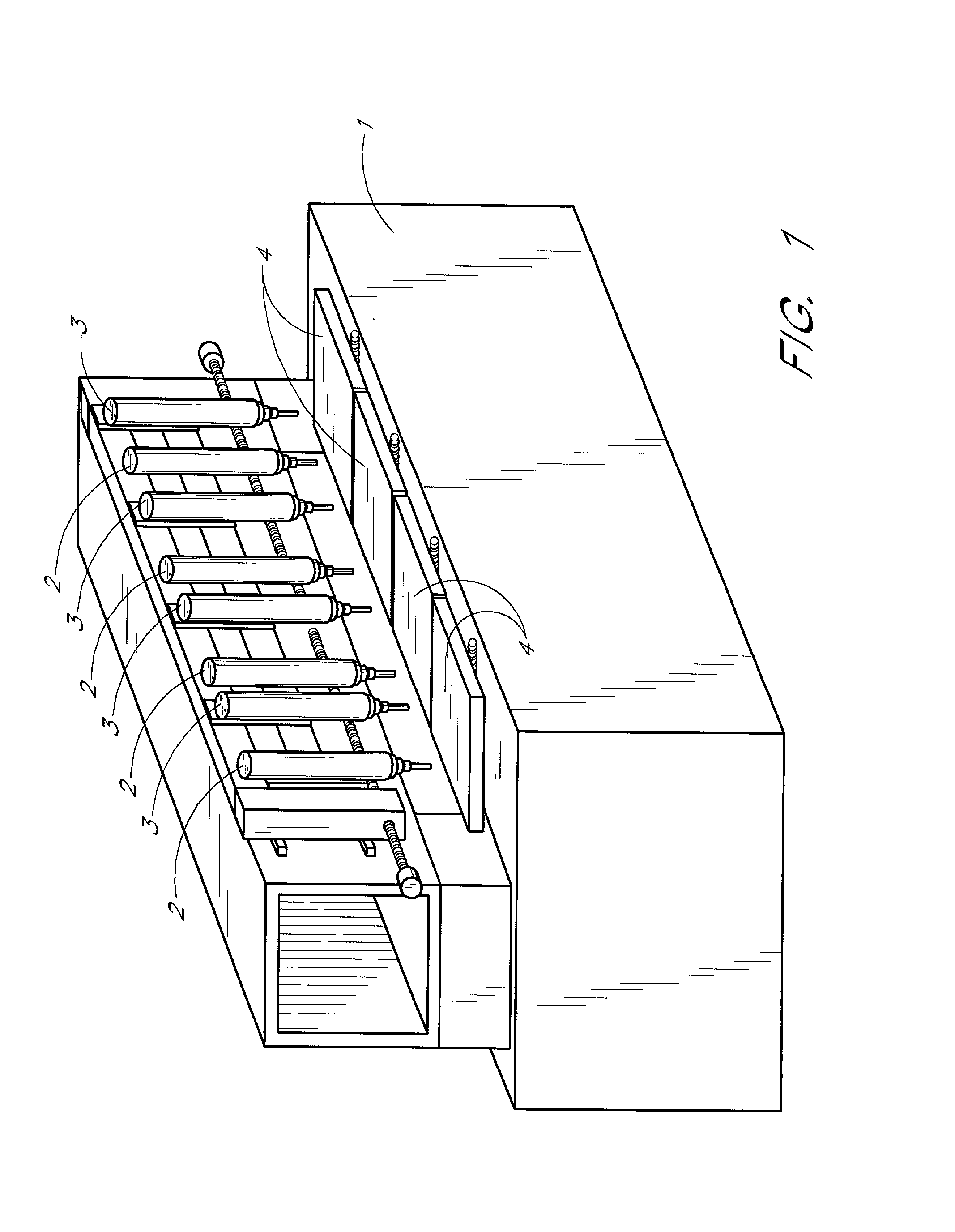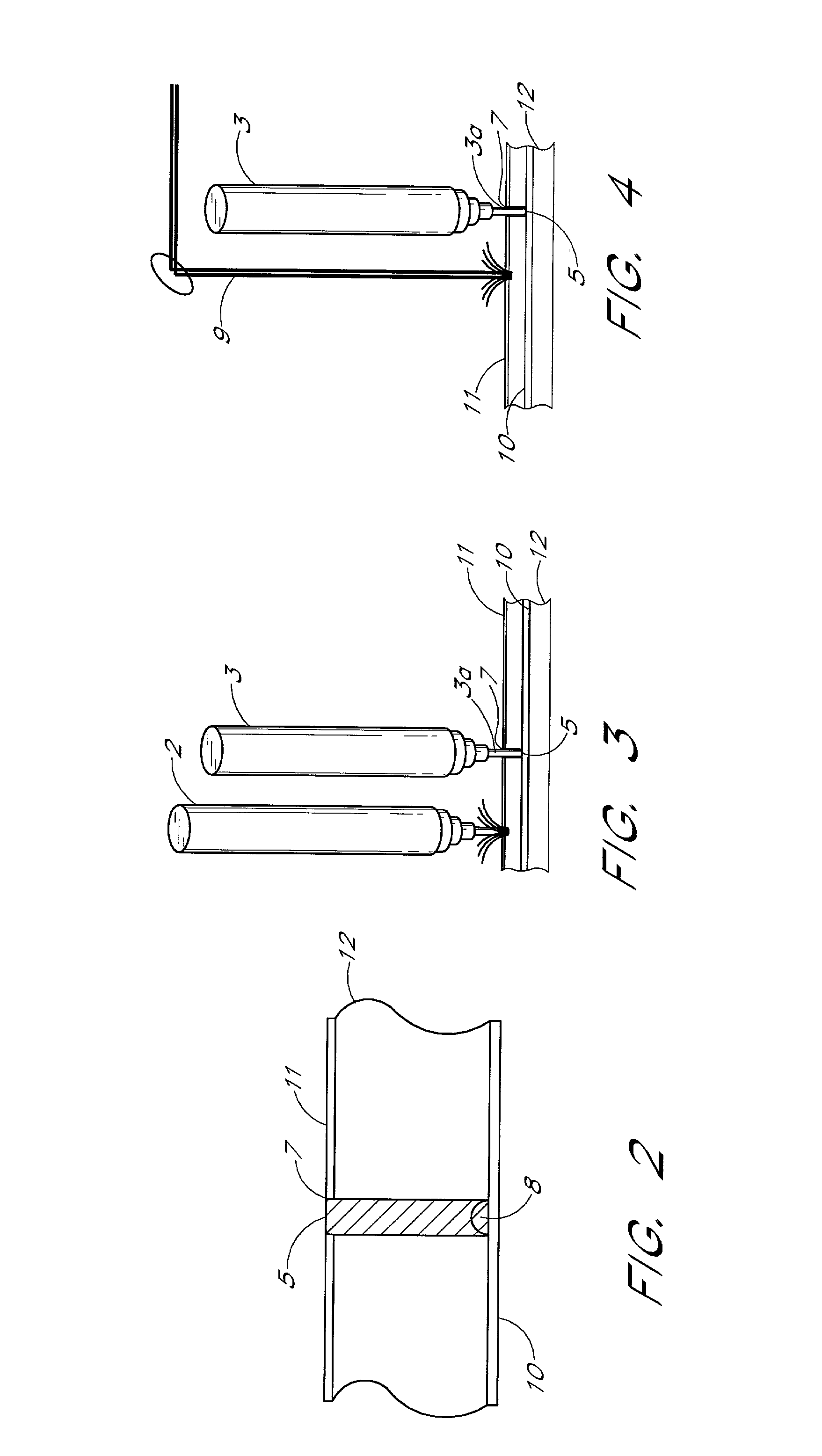System and method for metalization of deep vias
a metalization system and metalization technology, applied in the direction of printed element electric connection formation, conductive pattern formation, coating, etc., can solve the problems of preventing sufficient electrical contact and sometimes any contact with the imbedded layer, affecting the quality of the imbedded layer, and increasing the cost of components
- Summary
- Abstract
- Description
- Claims
- Application Information
AI Technical Summary
Benefits of technology
Problems solved by technology
Method used
Image
Examples
Embodiment Construction
[0027] Referring now to the drawings, FIG. 1 shows a typical machine tool which has a plurality of spindles 2 having tools 2a mounted thereon. Individual ones of said spindles are positioned over each of a plurality of worktables 4. Each of the spindles 2 is accompanied by an epoxy injector 3 which comprises a hollow injector needle 3a and an epoxy reservoir 3b for carrying a supply of conductive epoxy 5. The needle may have holes in the sides thereof as well. A compression system not shown applies pressure through a hose 3c and fitting 3d to the epoxy reservoir 3b to force measured amounts of conductive epoxy through the needle and into a workpiece mounted on the worktable 4. The diameter of the hollow injector needle 3a is equal to or smaller than the diameter of the drilled hole.
[0028] Referring now to FIG. 2, the prior art method of filling routed channels is not satisfactory for filling holes 7 in a PCB 12 with electrically conductive epoxy 5 because using the squeegee method r...
PUM
| Property | Measurement | Unit |
|---|---|---|
| aspect ratio | aaaaa | aaaaa |
| aspect ratios | aaaaa | aaaaa |
| conductive | aaaaa | aaaaa |
Abstract
Description
Claims
Application Information
 Login to View More
Login to View More - R&D
- Intellectual Property
- Life Sciences
- Materials
- Tech Scout
- Unparalleled Data Quality
- Higher Quality Content
- 60% Fewer Hallucinations
Browse by: Latest US Patents, China's latest patents, Technical Efficacy Thesaurus, Application Domain, Technology Topic, Popular Technical Reports.
© 2025 PatSnap. All rights reserved.Legal|Privacy policy|Modern Slavery Act Transparency Statement|Sitemap|About US| Contact US: help@patsnap.com



